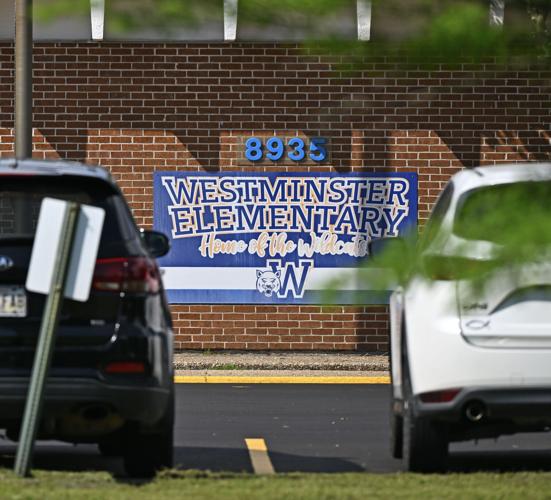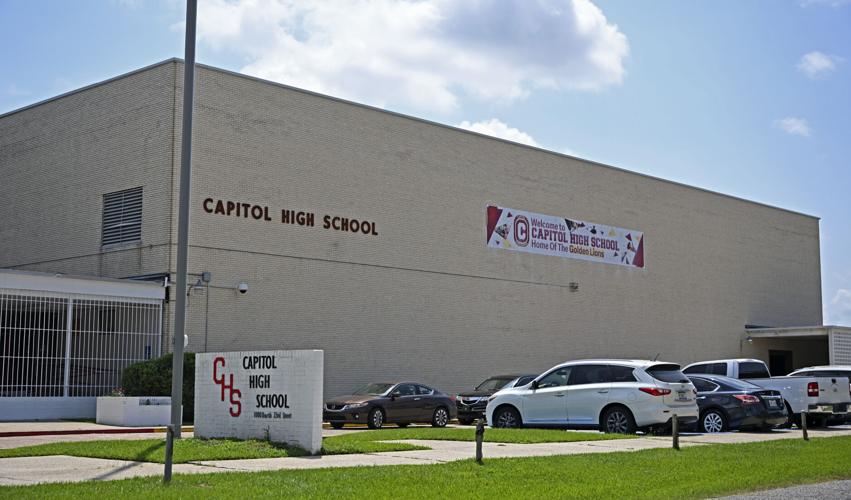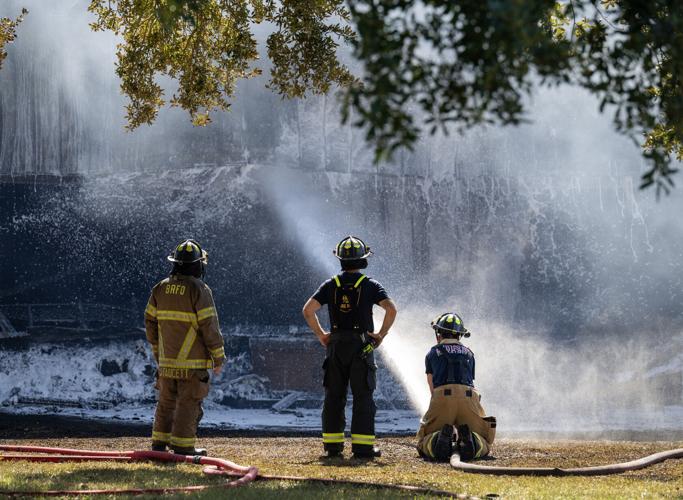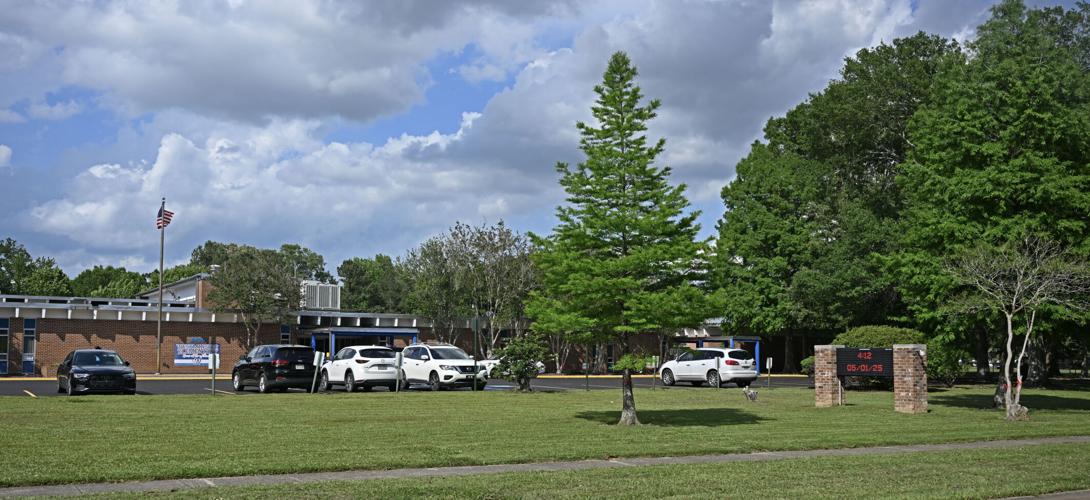When the current school year ends on May 23, nine public schools in Baton Rouge will cease operations and, in the process, five school buildings will become vacant.
These newly vacant facilities, emptied thanks to a vote last week by the East Baton Rouge Parish School Board, join at least five other vacant school buildings and several more vacant properties where the schools have been demolished.
This glut of unused and underused properties is challenging local leaders to figure out ways to prevent these locales from devolving into blight and sources of criminal activity as has happened to other vacant school properties in the recent past.
School Board Vice President Mike Gaudet said he recently sat in on the first meeting of a group seeking to do just that, to find the best ways to “return these community assets back to the community.
“For too many years, we’ve just hung on to property without any real plan,” Gaudet said. “That property needs to be reinvested back into the community.”
This ad hoc group is led by , a public agency formed in 2007 to bring together public and private partners to redevelop property in order to eliminate or head off blight. Build Baton Rouge’s board has appointees from city-parish government, the Baton Rouge Area Foundation and the Baton Rouge Area Chamber. Representatives from each also are participating in this new group.
Deidre Robert, chief executive officer of Build Baton Rouge, said her office is working on a master mapping system that will identify publicly held property, not just schools, that could potentially be pooled together and reused.
Robert, who started with Build Baton Rouge in March, said that in other places, she’s seen abandoned schools converted into business centers with a mix of tenants as well as community meeting space. Another common reuse is to create housing designated for key groups of workers who are important for a local economy such as law enforcement, educators and hospital staff, but have trouble finding good places to live.
“You have to be inclusive of what the community needs are,” she said.
Robert said successful redevelopment should not be rushed.
“I think you have to balance a sense of urgency with thoughtfulness,” she said. "You can move swiftly but very thoughtfully as well.”
Alumni center stage at Capitol
Of the newly vacant properties, Capitol High has generated the most attention. It is the only high school among the 28 schools impacted in the realignment plan approved last week.
Capitol High’s 65-year-old campus at 1000 N. 23rd St. — designed by famed local architect A. Hays Town — faces an uncertain future. Some alumni had hoped to have a new school built at this site but those hopes faded as such proposals stalled and enrollment at the high school nosedived.
The school system is exploring alternatives.
“We want to use that facility as a Capitol High alumni center along with some other services we want to provide to the area,” Supt. LaMont Cole told school board members last week.
If it became an alumni center, it would follow the path taken by the original McKinley High, which in the 1990s after a fire nearly destroyed that historic school. Like McKinley, Capitol is a historically Black high school. When Capitol High opened in 1950, it was the second public high school for Black children in Baton Rouge. It operated at a different location for a decade before moving to North 23rd Street.
“We want to designate an area for the alumni to be able to operate out of to get started and then after that, to think about how they can work as a nonprofit to generate revenues to support anything that happens at the facility in the immediate short run,” Cole said.
In the meantime, Cole said, he intends to move district staff in the areas of fine arts and athletics into Capitol. It’s part of a larger strategy to maintain a human presence in old schools to prevent them from falling further into disrepair.
“(Closed schools) potentially could turn into vacant properties where homelessness may start to arise and things we don't want to see happening in those neighborhoods. So, we got to keep some activity,” Cole said.
Teacher housing
Another reuse idea is to turn closed schools into housing for teachers.
When Cole first presented his realignment plan on April 15, he suggested that Westminster Elementary might be a good candidate for conversion to affordable housing for teachers.
It’s still an embryonic idea. The school system has not officially settled on what to do with Westminster, which is located at 8935 Westminster Drive. Westminster is the only school being closed that’s located in the City of St. George.
David Carnes, president of Westminster’s crime prevention district, said several residents of the neighborhood, which has nearly 600 homes, have expressed concern since Cole's announcement about what such housing would do to their home values.
“People who are trying to sell their house feel that the uncertainty of that would have a negative effect on whether they could sell that house,” Carnes said. “I can understand their concern."
Cole last week said Bernard Terrace Elementary, 241 Edison St., which is also being closed, might also work as future teacher housing.
“I used the phrase affordable housing, but really what I'm talking about is luxury housing with affordable prices geared strictly to teachers,” Cole explained, likening it to other recent redevelopment projects in the downtown Baton Rouge area.
Amid a national teacher shortage, school districts across the country have experimented with housing incentives to attract people to work in the classroom. The East Baton Rouge Parish school system has had ongoing struggles attracting and retaining teachers, particularly in high-demand subjects and at its most struggling schools.
Cole said the idea of using housing to attract teachers took shape in his mind during COVID.
“Folks who are in the profession started to make more money staying at home and getting online jobs,” he recalled.
“I was thinking it would be really attractive if a teacher knew they could come to the city of Baton Rouge and live in a luxury condo or in an apartment complex for a really nice rate,” he continued.
More vacant properties coming
The inventory of unused and underused school properties is likely to grow as the parish school system continues to see student enrollment slowly decline.
Cole’s realignment plan approved last week is just the first phase of what promises to be a multi-year effort to readjust a school district built for more than 60,000 students that now has fewer than 40,000.
Even with the recently approved closures and school consolidations, at least 15 Baton Rouge schools are expected to have fewer than 300 students when the new school year begins in August. Three are neighborhood schools untouched by the recent changes, including Northeast Elementary and Northeast High schools, both in Pride.
Six schools are expected to have room for at least 500 more students. That includes the two Northeast schools, as well as Belaire, Istrouma and Scotlandville high schools and Westdale Middle School.
Even with the recent closures, there are still 30-plus schools in operation that have not undergone major renovations and in facilities that are between 50 and 85 years old.
The school district, however, is slowly shrinking its footprint. The School Board has spent more than $2 million tearing down three closed schools, including the former Glen Oaks Middle, which was damaged by fire in late 2023. This month, the board is poised to approve spending as much as $650,000 to demolish former Eden Park Elementary.









